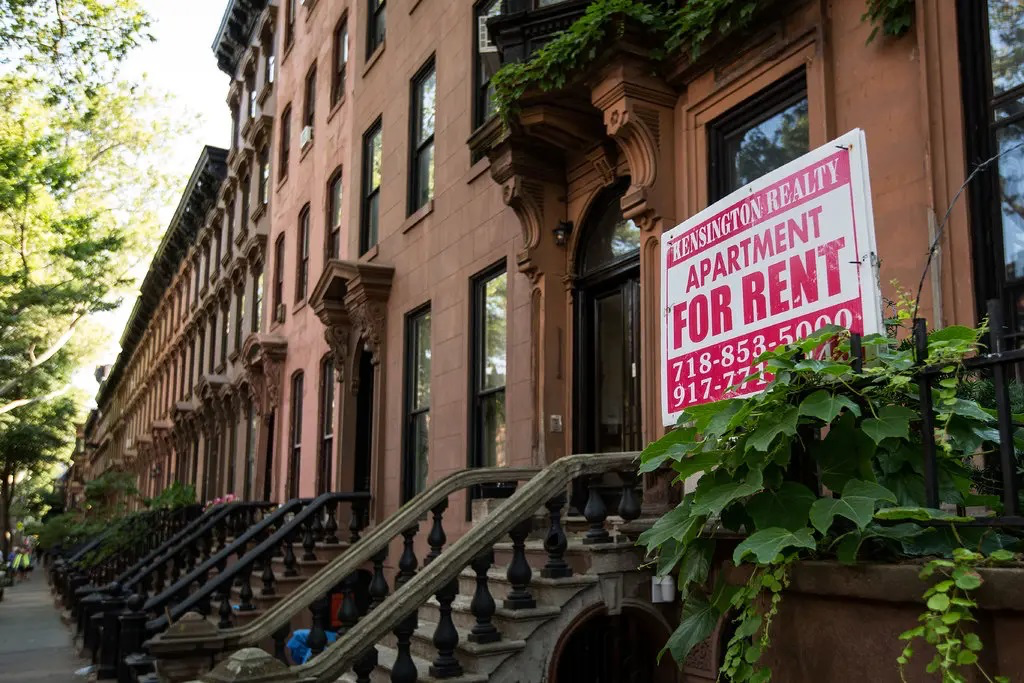RENT STABILIZATION LAWS AND PRIVATE LANDLORD-TENANT AGREEMENT

New York State has a system of rent regulation known as Rent Stabilization. New York State enacted the Rent Stabilization system in 1969 which intended to protect tenants from illegal and over-excessive increases in rent while permitting a fair return to owners who invest in real property.1 The Rent Stabilization system generally covers: (1) buildings of six or more units built between February 1, 1947, and December 31, 1973; (2) buildings built before February 1, 1947, who moved in after June 30, 1971; and, (3) buildings with three or more apartments constructed or extensively renovated.2 A local body with a mandate in both state and local law called the Rent Guidelines Board investigates the residential real estate industry to establish fair rent adjustments for stabilized rents.3 Under the Rent Stabilization Law, tenants are entitled to receive required services, renew their leases, and may not be evicted except on grounds allowed by law.4 If a landlord violates any of these tenants’ rights, tenants can file a complaint with the Division of Housing and Community Renewal (“DHCR”).5 DCHR is responsible for the supervision, maintenance, and development of affordable and moderate income housing in New York State.6Tenants can file their complaint with DHCR Here. Upon receipt of the complaint, the DHCR investigates and issues a written order subject to appeal.7 If the DHCR finds any tenant rights violated, it may reduce rents and even impose civil penalties against the landlord.8 But does a private agreement between tenants and landlord displace a Rent Stabilization Law? In a recent City of New York Civil Court case, the court addressed the issue of whether the Housing Stability and Tenant Protection Act (“HSTPA”) superseded an agreement between landlord and tenants. HSTPA made widespread changes to the New York State Rent Stabilization laws and sought to protect applicants seeking housing and tenants throughout the State.9 For instance, HSTPA reforms rent increase system for rent control tenants and establishes rent stabilization as an option for localities statewide. In West Side Marquis, LLC v. De Jourdan, the landlord, per the Rent Stabilization Law (NYC Administrative Code §26-513(a)) filed an application to adjust rents to the initial Legal Regulated Rents (“LRR”) at the building.10 However, the tenants objected to the LLR, and the parties settled pursuant to an agreement called the West Side Manor Adjustment Dispute Settlement agreement (“WSM Agreement”).11 The WSM Agreement stated that WSM Tenants and certain eligible successor tenants would be permitted to renew their leases for an amount less than the LRR called the Adjusted Collectible Rent (ACR) and “[s]uccessors shall have no right - except as explicitly provided herein -to pay the ACR -or any rent other than the LRR -for any WSM apartment at the time of succession."12 A couple of years later, the landlord offered Respondent a 1-year term in $2,720.52 per month or a two-year term at $2,747.32 per month (renewal offer).13 “None of the renewal offers were calculated based upon the ACR paid by (the deceased tenant of record) pursuant to the 2017 renewal.”14 Furthermore, because Respondent is the remaining family member/successor to the deceased tenant of record, the renewal lease was a “renewal lease options as the recognized successor of the deceased tenant of record….”15 After Respondent refused to renew, the landlord commenced a holdover proceeding against Respondent, seeking a judgment of possession and warrant of eviction and alleged that Respondent violated the Rent Stabilization Law by failing to sign an offered renewal lease.16 In contrast, Respondent claimed that the renewal leases had not been “properly calculated under the [Rent Stabilization Law].”17 More precisely, the Respondent claimed that HSTPA, the new law, requires the landlord to “offer a renewal based upon the ACR paid by the deceased tenant.”18 The Respondent further contended that the WSM agreement permitting an increase to the LRR “is now invalid after passage of the HSTPA, which preempts any private agreement, regardless of DHCR involvement.”19 In response, the landlord argued that the WSM agreement was ratified by DHCR and has received support from courts.20 The court held that HSTPA authorizes rent increases by RSL; therefore, HSTPA supersedes the WSM agreement.21 The court reasoned that DHCR lacks authority to set rents in rent stabilized apartments.22 Instead, that authority belongs to the Rent Guidelines Board. The court further reasoned that an agreement going against a Rent Stabilization law violates public policy.23 Furthermore, the court concluded that the landlord acting in good faith as to the enforceability of the WSM agreement is not a legitimate defense because “prospective changes to the law, especially the [Rent Stabilization Laws], are to be anticipated and are not so unjust as to make them unenforceable.”24 Accordingly, the court dismissed the landlord’s petition.25 The main goal of Rent Stabilization Laws is to protect tenants by preventing excessive and illegal increases in rent prices. Landlords may not use private agreements to defeat the purpose of these laws. Allowing landlords to circumvent Rent Stabilization Laws through private agreements with tenants goes against the spirit and purpose of protecting tenants and residents. Furthermore, landlords, through these private agreements, can take advantage of tenants who are neither lawyers nor apprised of New York State laws. Therefore, New York Civil Court correctly decided West Side Marquis, LLC v. De Jourdan.
Tags: Apartments, Contracts, Division of Housing and Community Renewal, Housing, Housing Stability and Tenant Protection Act, Landlord, Private Agreements, real estate, rent, Rent Regulation, Rent Stabilization, Tenants


